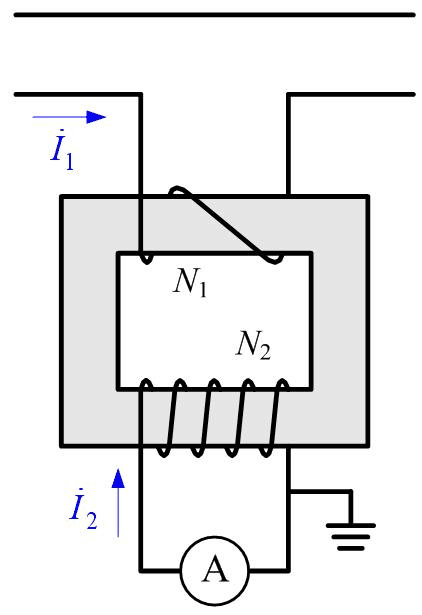I. Introduction
In today's power systems, accurate measurement and monitoring of electrical parameters are crucial for ensuring efficient and reliable operation. Instrument transformers play a significant role in this regard, allowing for safe and precise measurement of currents and voltages. This article provides an in-depth exploration of two important types of instrument transformers: Current Transformers (CTs) and Potential Transformers (PTs).
Importance of Instrument Transformers in Power Systems
Instrument transformers are essential components in power systems, enabling the measurement of high currents and voltages while providing isolation and protection to connected devices. They ensure the safety of personnel and equipment by stepping down these high values to manageable levels for accurate monitoring and control.
Overview of Current Transformers (CTs) and Potential Transformers (PTs)
CTs and PTs are specialized transformers designed to facilitate the measurement and monitoring of electrical currents and voltages in power systems. While they share similarities in their purpose, they have distinct characteristics and applications that set them apart. Understanding their principles of operation and key features is essential to appreciate their differences and select the appropriate transformer for specific requirements.
II. Understanding Current Transformers (CTs)
A current transformer, often abbreviated as CT, is an instrument transformer used in electrical power systems to measure and monitor electric current. It is specifically designed to step down high currents to a safe and measurable level for monitoring, protection, and control purposes.
The primary function of a current transformer is to provide accurate and proportional current measurements. It is connected in series with the circuit being measured, and the secondary winding of the CT is connected to the measuring instrument or protective relay.

Current transformers operate on the principle of electromagnetic induction. They consist of a primary winding, typically a few turns of heavy-gauge wire, which is connected in series with the high-current circuit, and a secondary winding with a large number of turns of fine wire. The turns ratio of the windings determines the current transformation ratio. For example, a current transformer with a turns ratio of 1000:1 will step down a primary current of 1000 amperes to a secondary current of 1 ampere.
Key characteristics and features of current transformers include:
Current Ratio: Current transformers are designed to step down high currents to a lower current suitable for measurement and protection. Common current ratios include 1000:1, 2000:1, and 5000:1.
Burden: CTs have a specified burden, which represents the maximum load or impedance that can be connected to the secondary winding without affecting the accuracy of the current measurement.
Accuracy Class and Errors: Current transformers are available in different accuracy classes, indicating the permissible error in current measurement. These accuracy classes range from 0.1 to 10, with lower classes providing higher accuracy.
Saturation and Accuracy Limits: CTs have limits on the maximum current they can accurately measure without saturation. Saturation occurs when the core of the transformer becomes magnetically saturated, leading to distorted measurements. It is important to choose a current transformer with an appropriate saturation limit for the application.
III. Exploring Potential Transformers (PTs)
A potential transformer, also known as a voltage transformer or PT, is an instrument transformer used in electrical power systems to measure and monitor voltage. It is specifically designed to step down high voltages to a lower, more manageable level for measurement and instrumentation purposes.
The primary function of a potential transformer is to provide accurate and proportional voltage measurements. It is connected in parallel to the circuit being measured, and the secondary winding of the PT is connected to the measuring instrument or control device.

Potential transformers operate on the principle of electromagnetic induction. They consist of a primary winding connected across the high-voltage circuit and a secondary winding connected to the measuring instrument. The turns ratio of the windings determines the voltage transformation ratio. For example, a potential transformer with a turns ratio of 100:1 will reduce the high voltage by a factor of 100 to produce a lower voltage on the secondary side.
Key characteristics and features of potential transformers include:
Voltage Ratio: Potential transformers are designed to step down high voltages to a lower voltage suitable for measurement and instrumentation. Common voltage ratios include 100:1, 200:1, and 1000:1.
Burden: PTs have a specified burden, which represents the maximum load or power that can be connected to the secondary winding without affecting the accuracy of the voltage measurement.
Accuracy Class and Errors: Potential transformers are available in different accuracy classes, indicating the permissible error in voltage measurement. These accuracy classes range from 0.1 to 10, with lower classes providing higher accuracy.
Phase Shift: Potential transformers introduce a small phase shift between the primary and secondary voltages. This phase shift is typically within a few degrees and is important to consider in applications where phase angle measurement is critical.
Voltage Transformation: PTs provide voltage transformation from the primary to the secondary winding. They ensure that the secondary voltage accurately represents the primary voltage, considering the turns ratio and other factors.
IV. Key Differences between CTs and PTs
CTs and PTs have distinct functions, connection configurations, ratios, accuracy considerations, and applications. Understanding these differences is essential for choosing the appropriate transformer for specific measurement and monitoring requirements in power systems.
| Characteristics | Current Transformers (CTs) | Potential Transformers (PTs) |
|---|
| Purpose | Measure and protect current in systems | Measure and monitor voltage in systems |
| Connection Configuration | Series connection | Parallel connection |
| Primary and Secondary Connections | Primary side typically a conductor, secondary side a winding | Both primary and secondary sides are windings |
| Ratio | Reduce high current to a lower secondary current | Reduce high voltage to a lower secondary voltage |
| Measurement Range | Typically used for high current measurement, such as thousands to tens of thousands of amperes | Typically used for high voltage measurement, such as kilovolts to hundreds of kilovolts |
| Accuracy Class | Choose different accuracy classes based on application requirements | Choose different accuracy classes based on application requirements |
| Phase Shift | Relatively small phase shift, typically ranging from a few degrees to tens of degrees | Relatively small phase shift, typically ranging from a few degrees to tens of degrees |
| Load Requirement | Low load requirements, allowing connection to lower loads | High load requirements, requiring connection to larger loads |
| Examples of Applications | Current measurement, current protection, energy metering, etc. | Voltage measurement, voltage monitoring, powering relays and protection devices, etc. |
| Safety and Insulation | Provide safe isolation for high currents, reducing the risk of electric shock | Provide safe isolation for high voltages, reducing the risk of electric shock |
| Factors to Consider for Equipment Selection | Measurement current range, load requirements, accuracy requirements, system voltage, etc. | Measurement voltage range, load requirements, accuracy requirements, system current, etc. |
| Major Suppliers | ABB, Siemens, GE, Schneider Electric, etc. | ABB, Siemens, GE, Schneider Electric, etc. |
V. Selecting the Right Transformer for the Application
Selecting the appropriate transformer, whether it is a CT or PT, depends on various factors. This section highlights the key considerations when choosing the right transformer for specific measurement and monitoring requirements.
1. Factors to Consider
1) Current or Voltage Measurement Requirements
The primary consideration is whether current or voltage measurement is required for the intended application.
2) Accuracy and Performance Specifications
The desired level of accuracy and performance, as determined by the specific application, should guide the selection of a transformer with the appropriate accuracy class and error limits.
3) System Voltage and Current Levels
The voltage and current levels in the power system influence the selection of transformers that can effectively handle these values.
2. Application Examples and Recommendations
1) CTs for Current Monitoring and Protection
CTs are ideal for applications such as load monitoring, fault detection, and protective relay operation, ensuring accurate measurement of high currents and enabling effective system protection.
2) PTs for Voltage Measurement and Instrumentation
PTs are well-suited for voltage measurement applications, such as voltage monitoring, metering, and synchronization of devices that rely on precise voltage inputs.
VI. Conclusion
In conclusion, CTs and PTs are vital components in power systems, providing accurate measurement and monitoring of currents and voltages, respectively. Understanding the differences between CTs and PTs is essential for selecting the appropriate transformer based on the specific requirements of each application. By considering factors such as function, connection configuration, ratio, accuracy, burden, and practical applications, power system professionals can make informed decisions and ensure accurate power system monitoring, protection, and control. Choosing the right instrument transformer is crucial for maintaining the reliability and efficiency of power systems, and both CTs and PTs play critical roles in achieving this objective.

Nantian Electronics a professional distributor of electronic components, providing a wide range of electronic products, saving you a lot of time, effort and cost through our meticulous order preparation and fast delivery service.
Share this post


